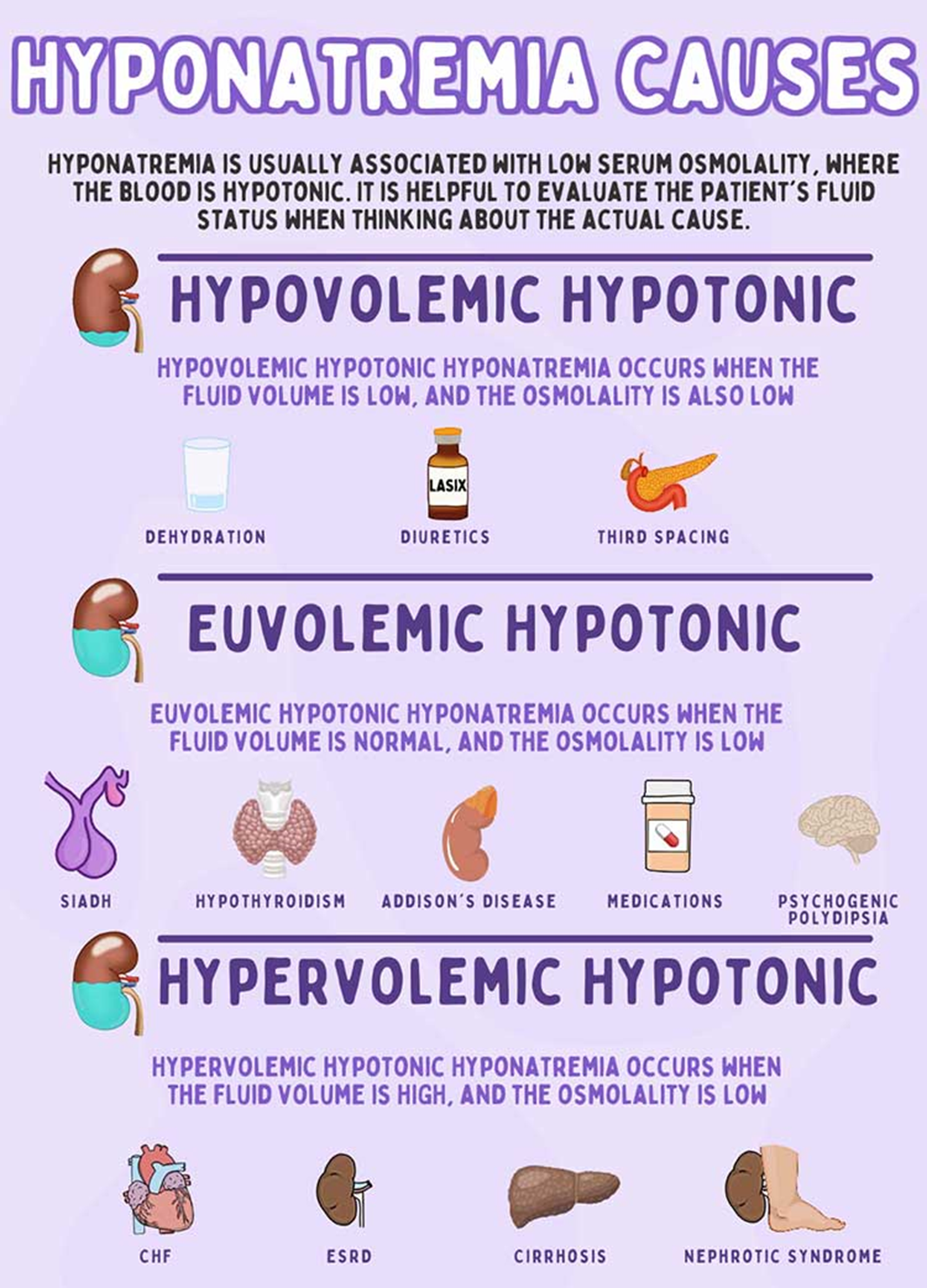The nurse observed that a client with diabetic ketoacidosis is experiencing abnormally deep, regular, and rapid respirations. How would the nurse document this observation in the medical record?
Bradypnea
Kussmaul's respirations
Cheyne-Stokes respirations
Biot's respirations
The Correct Answer is B
Choice A reason: This is incorrect because bradypnea is a term for slow breathing, usually less than 12 breaths per minute. The client is breathing rapidly, not slowly.
Choice B reason: This is correct because Kussmaul's respirations are a type of breathing pattern that is deep, regular, and rapid, usually more than 20 breaths per minute. Kussmaul's respirations are a sign of metabolic acidosis, which occurs in diabetic ketoacidosis due to the accumulation of ketones in the blood. The client is trying to exhale the excess carbon dioxide and lower the acidity of the blood.
Choice C reason: This is incorrect because Cheyne-Stokes respirations are a type of breathing pattern that is irregular, with periods of apnea (no breathing) alternating with periods of rapid breathing. Cheyne-Stokes respirations are a sign of cerebral dysfunction, such as stroke, brain injury, or coma.
Choice D reason: This is incorrect because Biot's respirations are a type of breathing pattern that is irregular, with periods of apnea (no breathing) interspersed with periods of normal breathing. Biot's respirations are a sign of brainstem damage, such as meningitis, encephalitis, or head trauma.
Nursing Test Bank
Naxlex Comprehensive Predictor Exams
Related Questions
Correct Answer is D
Explanation
Choice A reason: Stroke is not a cause of hyponatremia, but rather a possible complication of it. Hyponatremia is a condition where the sodium level in the blood is too low, which can affect the brain function and cause symptoms such as confusion, seizures, or coma. Stroke is a condition where the blood supply to a part of the brain is interrupted, which can cause brain damage and neurological deficits.
Choice B reason: Dehydration is not a cause of hyponatremia, but rather a cause of hypernatremia. Dehydration is a condition where the body loses more fluids than it takes in, which can affect the blood volume and the electrolyte balance. Dehydration can cause hypernatremia, which is a condition where the sodium level in the blood is too high, which can also affect the brain function and cause symptoms such as thirst, dry mouth, or lethargy.
Choice C reason: Increased secretion of aldosterone is not a cause of hyponatremia, but rather a cause of hypokalemia. Aldosterone is a hormone that regulates the sodium and potassium levels in the body by increasing the reabsorption of sodium and the excretion of potassium in the kidneys. Increased secretion of aldosterone can cause hypokalemia, which is a condition where the potassium level in the blood is too low, which can affect the muscle and nerve function and cause symptoms such as weakness, cramps, or arrhythmias.
Choice D reason: Congestive heart failure (CHF) is a cause of hyponatremia, as it is a condition where the heart is unable to pump enough blood to meet the body's needs. This can lead to fluid retention and edema, which can dilute the sodium level in the blood and cause hyponatremia. CHF can also stimulate the release of antidiuretic hormone (ADH), which increases the reabsorption of water in the kidneys and further lowers the sodium level in the blood.

Correct Answer is B
Explanation
Choice A reason: Sodium (Na+) imbalance can cause neurological symptoms such as confusion, seizures, or coma, but not abdominal pain or urinary retention.
Choice B reason: Calcium (Ca2+) imbalance can cause abdominal pain, urinary retention, and confusion, as well as muscle weakness, bone pain, and cardiac arrhythmias. These signs are the result of an inadequate supply of calcium, which is essential for nerve and muscle function, as well as bone health.
Choice C reason: Chloride (Cl-) imbalance can cause acid-base disorders such as metabolic acidosis or alkalosis, but not abdominal pain, urinary retention, or confusion.
Choice D reason: Phosphates (PO4^3^-) imbalance can cause bone and muscle problems, such as rickets, osteomalacia, or tetany, but not abdominal pain, urinary retention, or confusion.
Choice E reason: Potassium (K+) imbalance can cause cardiac and neuromuscular symptoms, such as arrhythmias, palpitations, muscle weakness, or paralysis, but not abdominal pain, urinary retention, or confusion.
Whether you are a student looking to ace your exams or a practicing nurse seeking to enhance your expertise , our nursing education contents will empower you with the confidence and competence to make a difference in the lives of patients and become a respected leader in the healthcare field.
Visit Naxlex, invest in your future and unlock endless possibilities with our unparalleled nursing education contents today
Report Wrong Answer on the Current Question
Do you disagree with the answer? If yes, what is your expected answer? Explain.
Kindly be descriptive with the issue you are facing.
